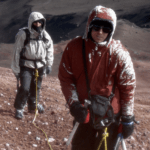Cuyabeno Wildlife Reserve and Yasuní National Park are both protected areas located in the Ecuadorian Amazon, but they have distinct characteristics, features, and conservation significance. Ecotourism plays an essential part of the local economies which makes Cuyabeno Amazon Tours or Yasuní Amazon Tours a great way to explore the rainforest. Here are the main differences between the jungle regions:
Location: Cuyabeno Wildlife Reserve is situated in the northeastern part of Ecuador, covering parts of the Sucumbíos and Orellana provinces. On the other hand, Yasuní National Park is located in the eastern part of Ecuador, extending into the Napo and Pastaza provinces.
Size: Yasuní National Park is significantly larger than Cuyabeno Wildlife Reserve. Yasuní covers an extensive area of around 9,820 square miles (25,000 square kilometers), making it one of the largest national parks in Ecuador. In contrast, Cuyabeno covers an area of approximately 2,300 square miles (6,000 square kilometers).
Biodiversity: Both areas are known for their high biodiversity, but Yasuní National Park is particularly renowned for its exceptional richness. It is considered one of the most biodiverse places on Earth, with an incredible variety of plant and animal species. Yasuní’s biodiversity includes numerous species of mammals, birds, amphibians, reptiles, and insects, some of which are endemic or endangered.
Indigenous Presence: Both areas are home to indigenous communities. In Cuyabeno, there are several indigenous groups, such as the Siona, Secoya, Cofan, and Kichwa communities. In Yasuní, the Tagaeri and Taromenane communities live in voluntary isolation to avoid contact with the outside world.
Oil Drilling: One of the significant differences between the two areas is the presence of oil reserves. Yasuní National Park has been a subject of international attention due to its proposal to leave the oil reserves untapped in an initiative called the Yasuní-ITT Initiative. The idea was to seek international financial contributions to protect the park and prevent oil drilling, but the initiative faced challenges and was ultimately abandoned. Cuyabeno, on the other hand, has had some oil exploration activities in the surrounding areas, which can pose threats to the reserve’s ecosystems.
Conservation Status: Both Cuyabeno Wildlife Reserve and Yasuní National Park are protected areas, but they have different levels of protection and conservation status. Yasuní is designated as a UNESCO Biosphere Reserve and a UNESCO World Heritage Site, providing it with a higher level of international recognition and protection. Cuyabeno is also protected, but it does not hold the same international designations.
Despite their differences, both Cuyabeno Wildlife Reserve and Yasuní National Park are crucial areas for biodiversity conservation in the Ecuadorian Amazon. They play essential roles in preserving the unique ecosystems and supporting the livelihoods of local communities and indigenous populations.
Threats to Yasuni and Cuyabeno from oil exploitation
There have been significant differences in oil exploration and extraction activities between the Yasuní National Park and the Cuyabeno Wildlife Reserve in the Ecuadorian Amazon.
Yasuní National Park has been the center of a unique and high-profile conservation initiative known as the Yasuní-ITT Initiative. The initiative aimed to keep oil reserves untapped in the Ishpingo-Tambococha-Tiputini (ITT) block, which is located within the boundaries of the park. By leaving the oil underground, the initiative sought to avoid carbon emissions, protect the park’s exceptional biodiversity, and respect the territories of isolated indigenous communities (the Tagaeri and Taromenane).
The Yasuní-ITT Initiative was proposed by the Ecuadorian government in 2007, and it appealed for international contributions in exchange for keeping the oil reserves unexploited. However, the initiative did not receive the expected financial support, and the government officially terminated it in 2013. Subsequently, oil exploration and extraction activities began in the ITT block.
The decision to allow oil drilling in the ITT block has been highly controversial and faced opposition from environmentalists, indigenous groups, and concerned citizens both within and outside of Ecuador. They argue that oil drilling in the park poses significant environmental risks and threatens the habitat of unique wildlife, including various endangered species.
The Cuyabeno Wildlife Reserve, on the other hand, has also faced pressures from oil exploration and extraction activities, but it has not received the same level of international attention as Yasuní. Unlike the Yasuní-ITT Initiative, there has been no explicit campaign or formal international proposal to keep oil reserves untapped in Cuyabeno. Some oil exploration activities have occurred in areas surrounding the Cuyabeno Wildlife Reserve, raising concerns about potential environmental impacts on the reserve’s ecosystems and the indigenous communities residing nearby.
It’s essential to note that the information provided is based on the situation as of late 2021. There may have been developments or changes regarding oil exploration in both Yasuní National Park and the Cuyabeno Wildlife Reserve since that time. The status of oil activities in these areas can be subject to ongoing debates, government policies, and international pressure related to environmental conservation and indigenous rights. For the latest and most accurate information, it’s recommended to refer to current news sources and official reports from relevant authorities and conservation organizations.
Jake is originally from Sydney and co-founded Ecuador Eco Adventure with Wlady back in 2006. Together they built one of the country's most prominent climbing and hiking agency that is number one in summit attempts of Chimborazo, Cotopaxi, Antisana, and Cayambe. Ecuador Eco Adventure has since been recommended in National Geographic Adventure, The Rough Guide, and the Lonely Planet.




0 Comments